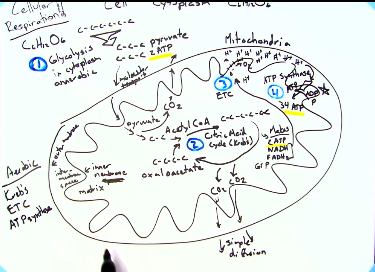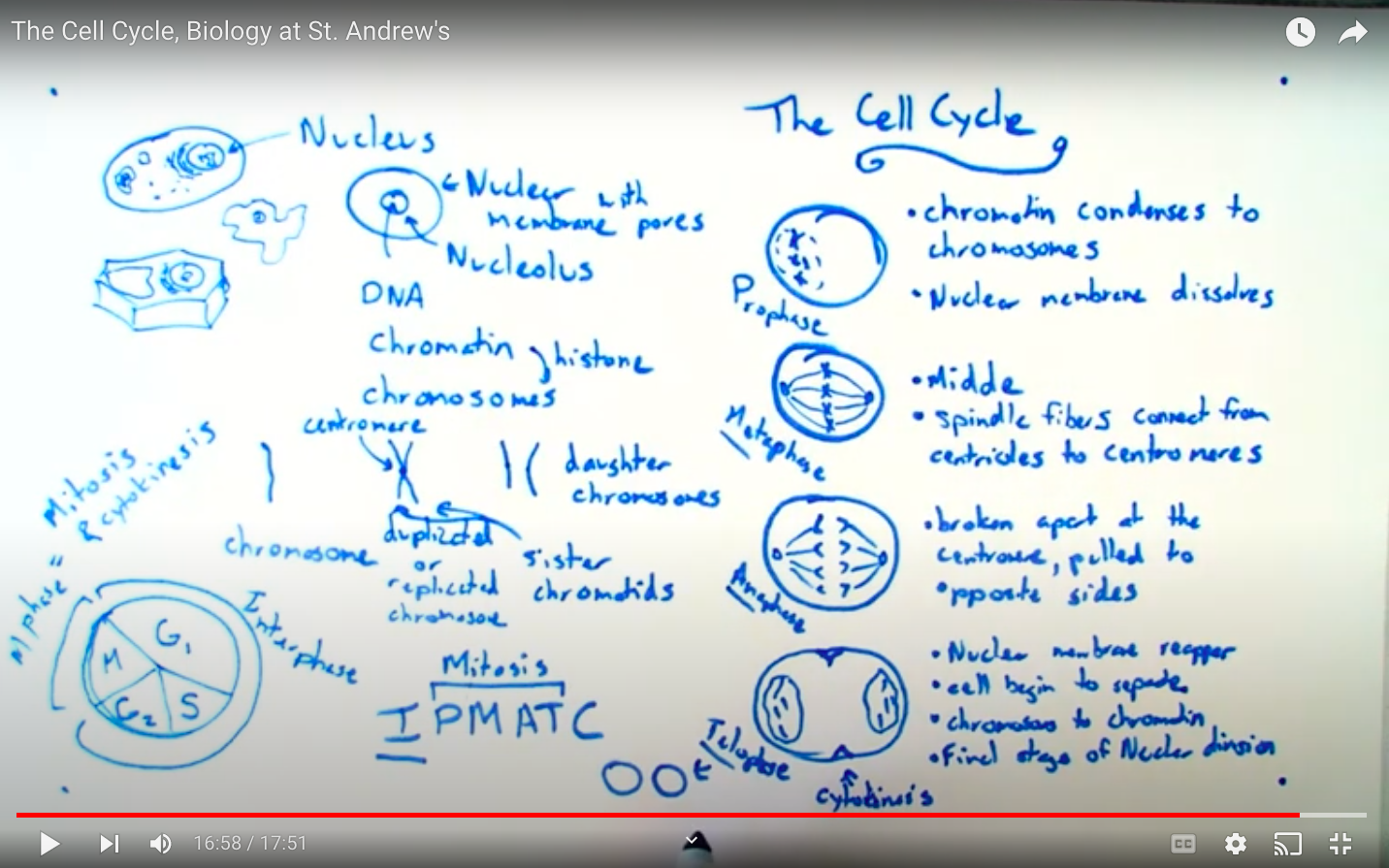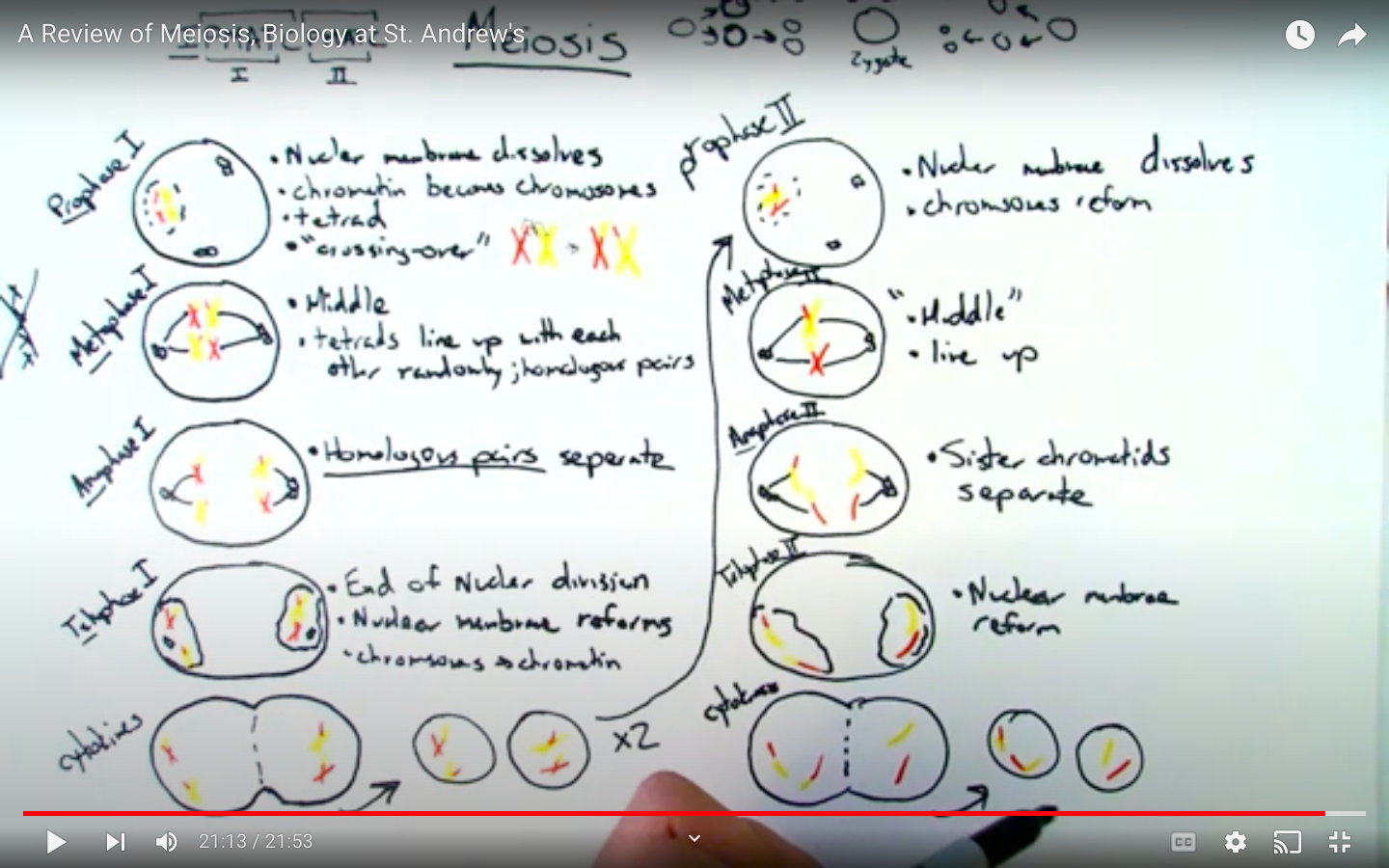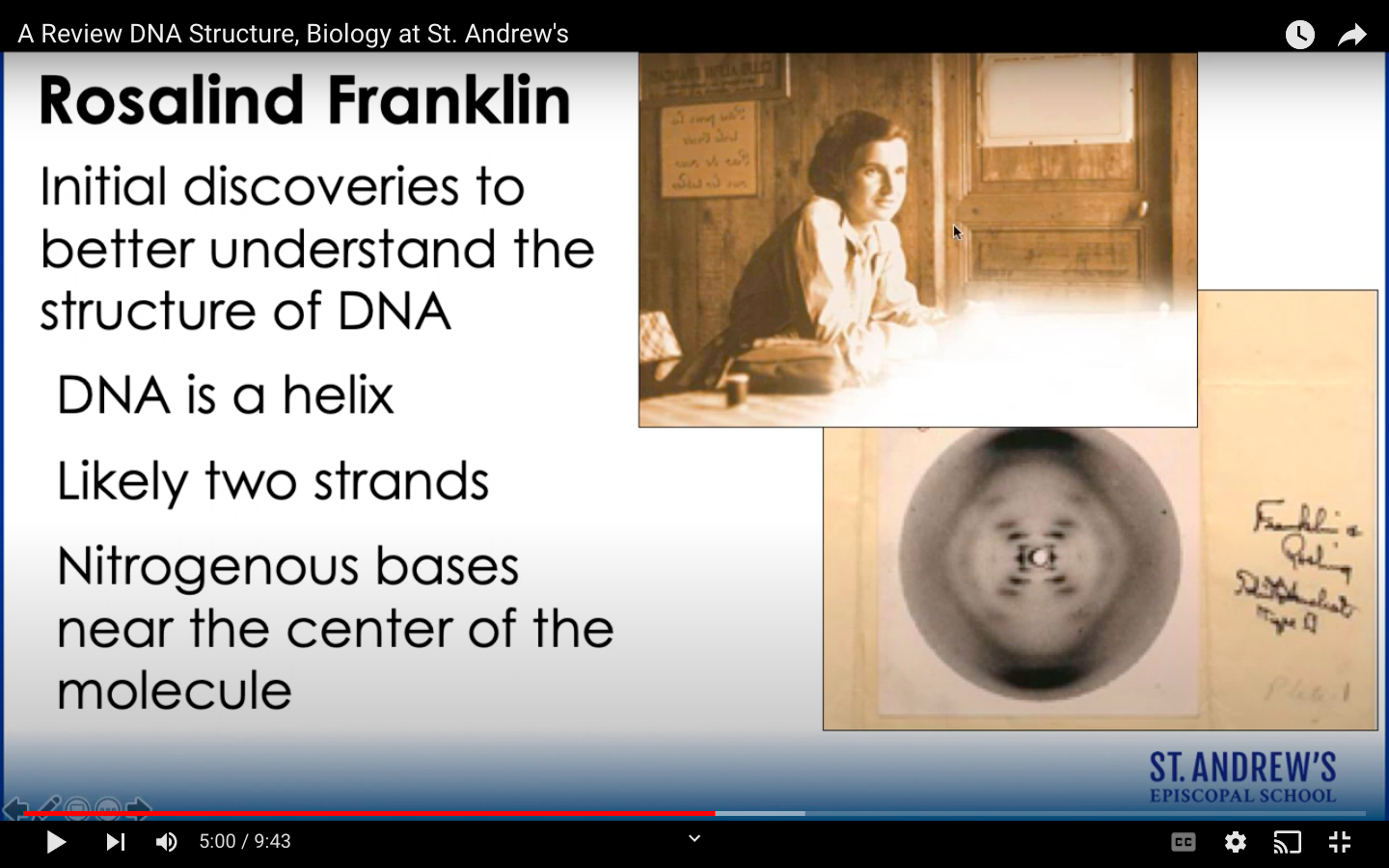Review Essential Content
Navigate the videos below to review material as you move forward in biology. If you’ve missed a class or just need help to reinforce a difficult concept, this page is here for you.
Significant Figures - A Review
Watch this video to reinforce the six essential rules you’ll need to succeed when calculating and analyzing data in biology at St. Andrew’s Episcopal School.
Chemistry of Life
Video 1
Atoms, Elements, & Isotopes - A Review
Watch this video to more clearly differentiate the above terms while also learning about the difference between atomic number, atomic mass, average atomic mass, and electronegativity.
Video 2
Periodic Trends & Family Names
Watch this video to review the trends we see in the periodic table by identifying the family names and similarities they have.
Video 3
Electrons vs. Valence Electrons
Use this video to reinforce your knowledge of isotopes while discussing the difference between electrons and valence electrons, while also picking up on a few more trends observed in the Periodic Table of the Elements.
Video 4
An Element’s Charge
Watch this video to review all the essential terms discussed thus far and connect it with determining how to identify an element’s charge based its location on the periodic table.
Video 5
Chemical Bonding
This video reviews the last page of your chemistry review packet and has several minutes discussing hydrogen bonds within a water molecule (a crucially important characteristic for life). In total, this video reviews 5 types of chemical bonds: ionic, covalent, metallic, hydrogen-bonds, & Van der Waals Forces.
Biological Macromolecules, Chemical Reactions, & Enzymes
Video 1
General Introduction & Carbs
This video will introduce biological macromolecules with a brief discussion distinguishing biomolecules from macromolecules, introducing the terms monomers & polymers, while also discussing the first of the four: carbohydrates.
Video 2
Lipids
This video discusses how to distinguish a lipid from the other four biological macromolecules while also discussing saturated fats, unsaturated fats, and trans fats.
Video 3
Nucleic Acids
This video reviews how to identify a nucleic acid while discussing the components of a nucleotide (including phosphates, types of pentose sugars, and the five nitrogenous bases).
Video 4
Proteins
This video reviews how to identify a protein by recognizing the components of a protein’s monomer: the amino acid. We’ll discuss what makes an organic compound an amino acid, and discuss how those form polymers through polypeptide bonds.
Video 5
Chemical Reactions
This video reviews the essentials associated with chemical reactions, including reactants vs. products, endergonic vs. exergonic reactions, and associated terminology related to each topic.
Video 6
Enzymes
This video introduces how enzymes relate to chemical reactions in a living organism, discusses how they work, and reviews how enzymes connect to substrates to ultimately speed up a chemical reaction by lowering the activation energy.
The Cell
Video 1
Cell Transport, Part 1
This video focuses on first introducing and identifying the essential terms for all aspects of cell transport followed by a deeper dive into aspects of passive transport.
Video 2
Cell Transport, Part 2
Your second video of cell transport dives into all aspects of active transport, including how to differentiate molecular and bulk transport, and describing the different terms associated with types of bulk transport.
Video 3
Photosynthesis
Watch this video to learn more about the processes within photosynthesis, including photosystems II, photosystems I, and the Calvin cycle. Remember that the important parts are to understand the inputs and outputs; are you able to draw out these processes and see how each relate to one another?
Video 4
Cellular Respiration
This video reviews the four steps found within cell respiration, including: glycolysis, the citric acid (Kreb’s) cycle, the electron transport chain, and ATP synthase. Be sure to use this video along with your notes to review the ins and outs of each process to be ready to move forward.
Genetics
Video 1
The Cell Cycle
Use this video to reinforce the fundamentals of the cell cycle: essentially how a cell continually moves through the phases of interphase (G1, S, G2) followed by M phase (Mitosis & Cytokinesis). This video will also assist in reviewing key terminology as it relates to the cell and will help better understand Meiosis when you reach that point.
Video 2
Meiosis
This video should assist you in understanding the steps of Meiosis and differentiate this process from mitosis. Be sure to pay attention to certain steps that students most often mistake (e.g. prophase I, Metaphase I, Anaphase I, and Anaphase II). Be sure to use your textbook and lab to also supplement the content video attached.
Video 3
Genetics: Key Terminology
This video should give you knowledge on how to describe genetic content. Watch this video to make sure you know how to appropriately describe genotypic and phenotypic conditions to better prepare you for Mendelian Genetics.
Video 4
Punnett Squares
After reviewing your key terminology, this video should give you the capability to create a Punnett square then summarize it appropriately using key terminology. As an example, could you create a dihybrid cross between a Rrqq with rrQq? What would the phenotypic ratio for that cross be?
You should also be able to differentiate the terms Mendelian and non-Mendelian genetics.
Video 5
DNA Structure
This video should assist you in understanding the basic structure of a deoxyribonucleic acid (DNA). This content video discusses: chemical composition, Chargaff’s rule, purines vs. pyrimidines, early history that gets us to the present day, and a review of antiparallel strands.
Video 6
DNA Replication
This video reviews key terminology to understand the process with respect to how DNA is replicated in a semi-conservative model to create two identical strands during the synthesis phase of interphase.
Video 7
RNA
This quick video breaks down the differences between messenger RNA, ribosomal RNA, and transfer RNA.
Video 8
Transcription & Translation
This final video as it relates to genetics reviews how mRNA is created, and how that mRNA is used with rRNA and tRNA to create proteins. This video has several more difficult concepts; please use your textbook in conjunction with this video to assist.
Taxonomy & Phylogeny
Taxonomy Introduction
Use this video to reinforce your understanding of taxonomy. What’s the purpose of this classification system? How does it work? What are the rules for writing scientific names? Answer these questions and more in the video here.
Species Concepts
Depending on the career you may decide to take in the sciences, you might end up defining the word “species” very differently. This video discusses four commonly used species concepts within the sciences: biological, morphological, ecological, and phylogenetic. After this video, you should feel comfortable differentiating the four, and understanding the pros and cons of each.
Phylogenetic Trees
This video gives you an introduction with respect to how to read and analyze phylogenetic trees. You’ll differentiate between apomorphic and plesiomorphic traits, understand how nodes (or common ancestors) and help us understand how organisms are related to one another.



















